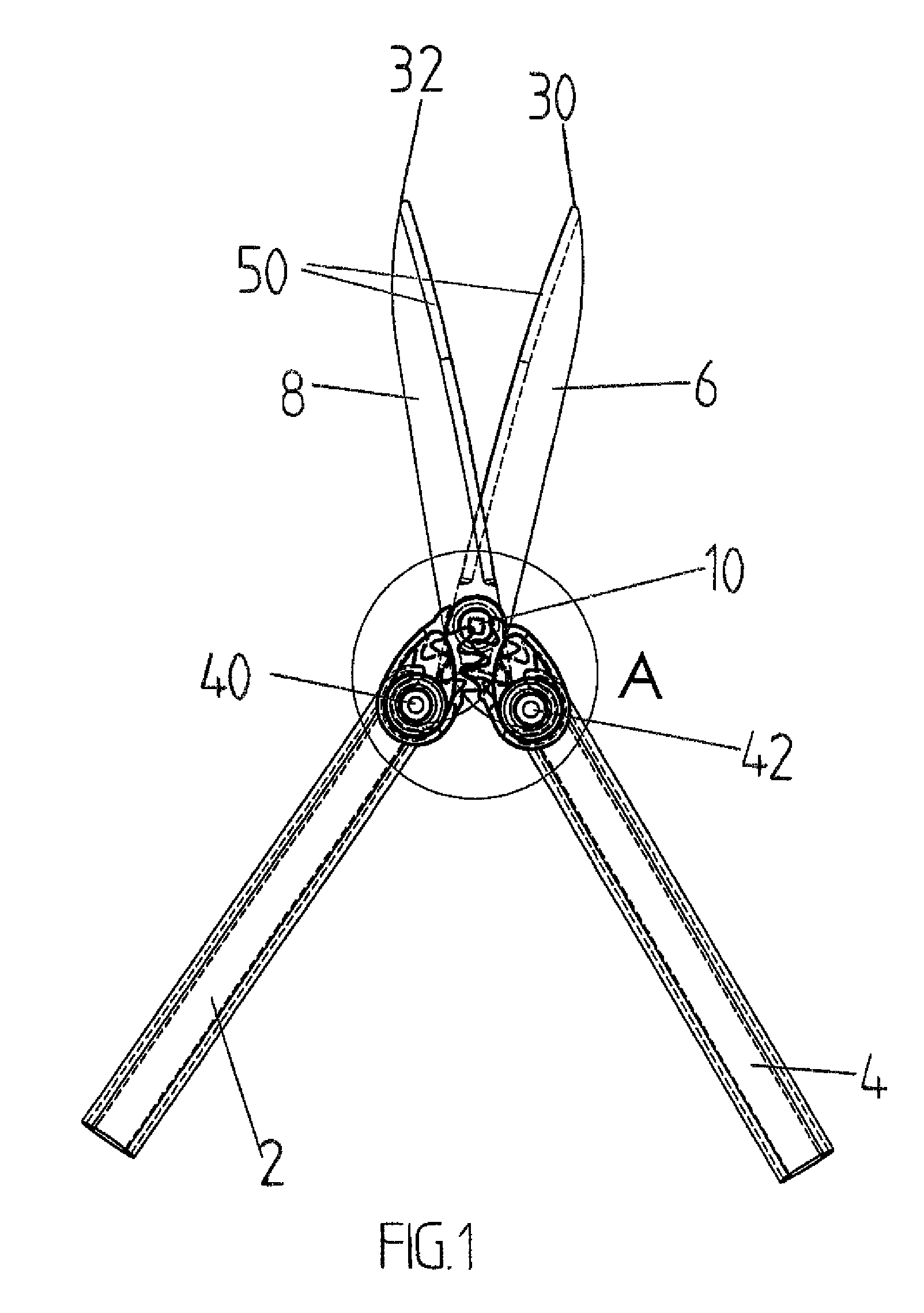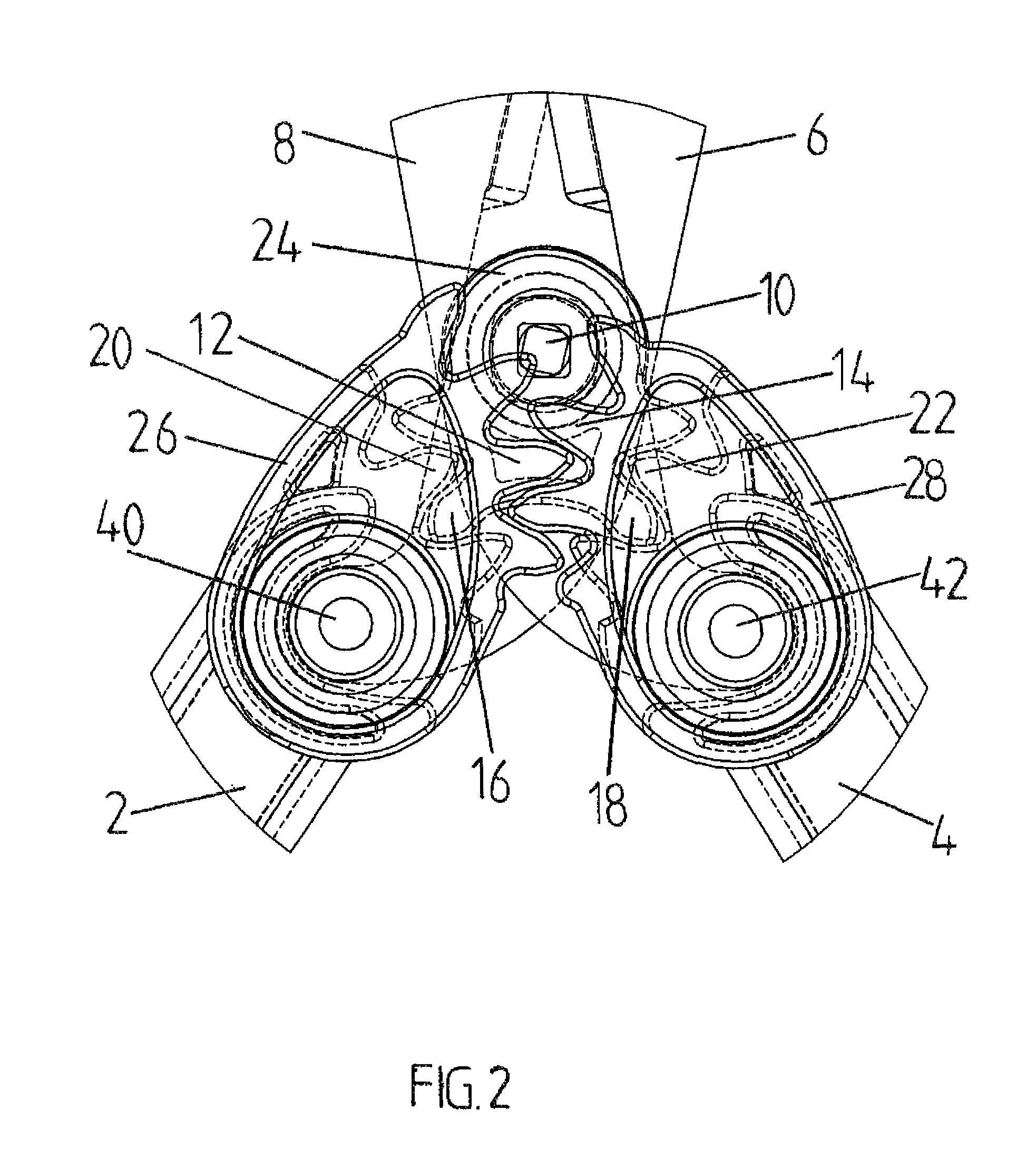Cutting tool
a cutting tool and cutting blade technology, applied in the field of cutting tools, can solve the problems of increased cutting movement, inefficient cutting operation, increased cutting movement of the handle, etc., and achieve the effect of saving manufacturing costs and less expensiv
- Summary
- Abstract
- Description
- Claims
- Application Information
AI Technical Summary
Benefits of technology
Problems solved by technology
Method used
Image
Examples
Embodiment Construction
[0015]FIG. 1 shows an embodiment of a cutting tool according to the present invention, which in this embodiment is hedge shears. These hedge shears comprise a first handle 2 and a second handle 4. The handles are generally straight, elongated parts and they may be made of steel, plastic, aluminium or any other material widely known in the art. Furthermore, the handles may comprise, preferably at their ends, a grip part which may be designed to fit the user's hand and provided with a friction-enhancing material, such as rubber. The hedge shears further comprise cutting blades 6 and 8, which are preferably made of steel or aluminium or another suitable material known in the art. The cutting blades 6 and 8 further comprise cutting edges 50.
[0016]According to FIG. 1, the first cutting blade 6 is attached to the first handle 2 at a first pivot point 40 and the second cutting blade 8 is attached to the second handle 4 at a second pivot point 42. The cutting blades 6 and 8 are thus pivotal...
PUM
 Login to View More
Login to View More Abstract
Description
Claims
Application Information
 Login to View More
Login to View More - R&D
- Intellectual Property
- Life Sciences
- Materials
- Tech Scout
- Unparalleled Data Quality
- Higher Quality Content
- 60% Fewer Hallucinations
Browse by: Latest US Patents, China's latest patents, Technical Efficacy Thesaurus, Application Domain, Technology Topic, Popular Technical Reports.
© 2025 PatSnap. All rights reserved.Legal|Privacy policy|Modern Slavery Act Transparency Statement|Sitemap|About US| Contact US: help@patsnap.com



